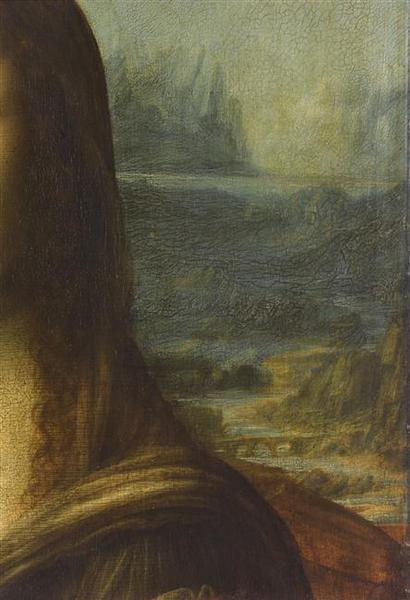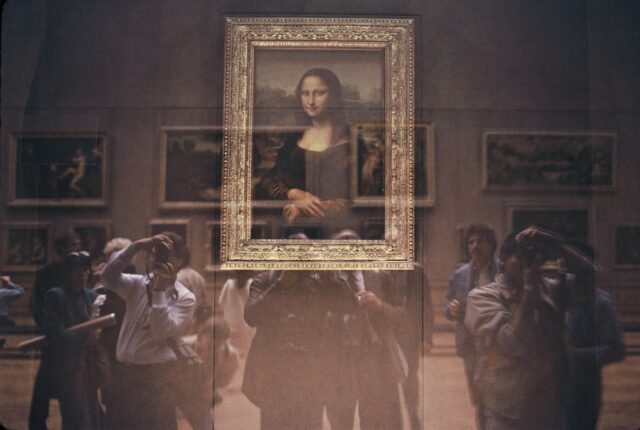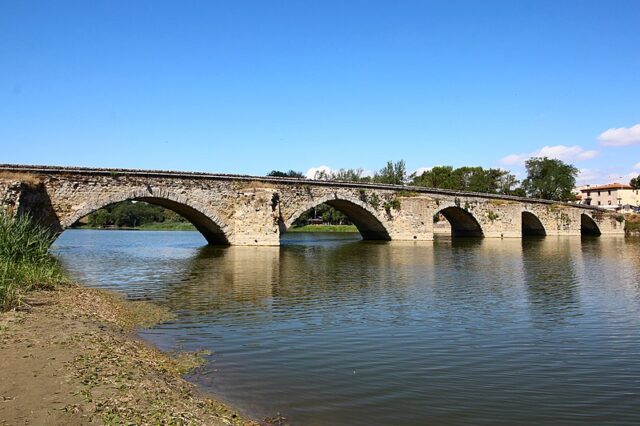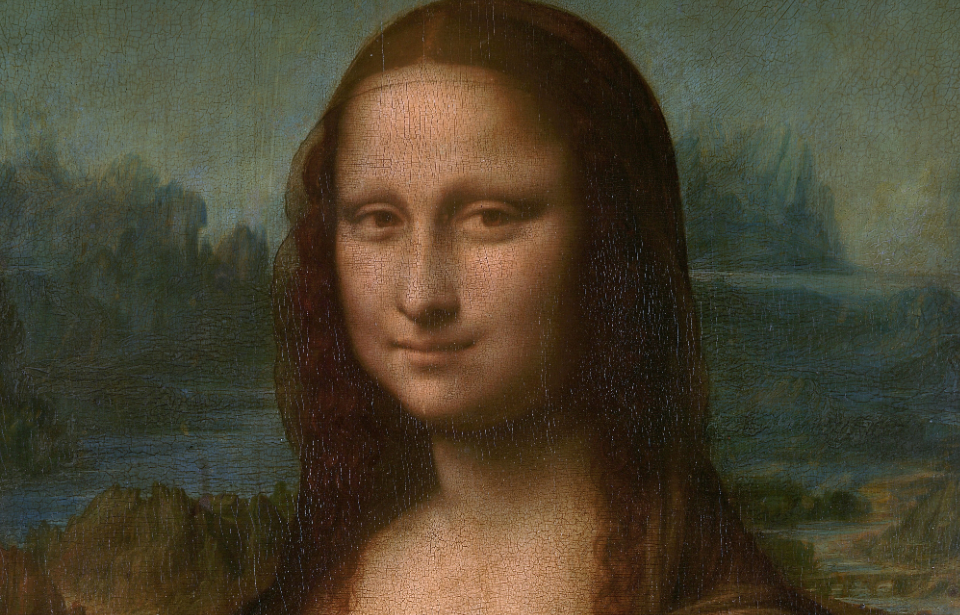Leonardo da Vinci’s Mona Lisa is one of the most famous paintings in history. On display at the Louvre in Paris, it is considered a masterpiece of the Italian Renaissance and has been described as “the best known, the most visited, the most written about, the most sung about, the most parodied work of art in the world.” Despite all the publicity, many mysteries still surround the painting, and art historians continue to try and reveal the truths behind them.
Everything from the subject of the painting to small details in the background have been the basis for speculation. Italian historian Silvano Vinceti is the most recent person to possibly solve one of the Mona Lisa‘s mysteries. Vinceti claims to have identified the actual bridge depicted in the painting’s background as the Romito di Laterina bridge in Tuscany.
Romito di Laterina bridge

The bridge depicted by da Vinci has often been claimed to be Ponte Buriano in Arezzo, a neighboring town to Laterina, as well as Ponte Bobbio in the northern Italian town of Piacenza. Using drone images and historical documents, as well as comparing the painting and photographs of the region, Vinceti believes he has confirmed the bridge is unmistakenly the “Etruscan-Roman bridge, Romito,” at Laterina.
According to Vinceti, the detail that confirmed it’s Ponte Romito is the number of arches. The Romito, like the bridge in the Mona Lisa‘s background, had four arches. The Ponte Buriano, however, had six arches, and the Ponte Bobbio had more than six.
Medici family documents helped Vicente

Vinceti used documents that belonged to the Medici family from the Florence state archives. They showed “a very busy, functioning bridge” between 1501 and 1503. These documents corresponded to the time when da Vinci was in the Val d’Arno area. He was there first at the behest of Cesare Borgia, a cardinal from the most notorious noble family in Renaissance Italy, and later for Piero Soderini, a statesman of the Republic of Florence.
Today, only one arch and the foundations of the bridge on one side of the Arno River remain of the Romito. This didn’t stop Vinceti, who measured the width between the riverbanks and the size of the arch, which confirmed that four arches would stretch across the Arno. This confirmed to Vinceti that the Romito is the bridge depicted in the painting.
The bridge wasn’t the only thing that made Laterina a likely location. Vinceti told the Foreign Press Association in Rome, “The distinctive form of the Arno [River] along that stretch of territory corresponds to what Leonardo portrayed in the landscape to the left of the woman depicted in the famous painting.”
The reaction in Laterina

According to the mayor of Laterina, Simona Neri, Vinceti’s claim has caused quite a stir in the town of just over 3,500 people. She also said that it’ll be the cause of a little rivalry between Laterina and Buriano. The people of Buriano put a poster of the Mona Lisa up next to the signpost for the bridge. Neri quipped, “There’ll be some rivalry; we’ll need to put a poster up, too.”
Neri also said that the Romito bridge would become a project of the local government. “We need to try to protect what’s left of the bridge, which will require funding.” She also said a bicycle path will be made along the river near the location of the Romito, which will hopefully bring more tourists to the area due to the claimed relationship with the Mona Lisa.
More from us: Legendary Filmmaker Steven Spielberg Regrets a Change He Made to ‘E.T. the Extra-Terrestrial’
No matter which bridge it truly is, as reported by the Pacific Standard, da Vinci’s inspiration was likely “a motif, a mere representation of the countryside, one that may have been hanging in da Vinci’s studio,” as he did not paint it in Laterina.
Let us know what you think in the comments below.
